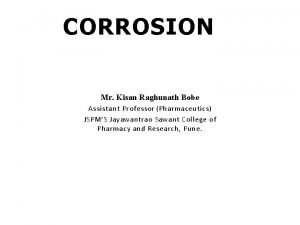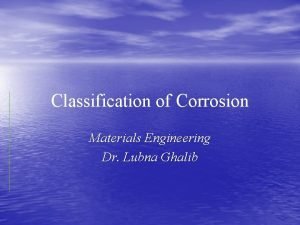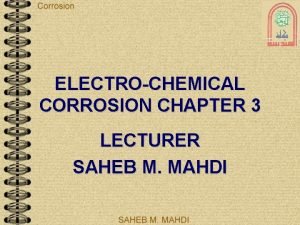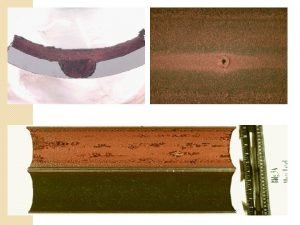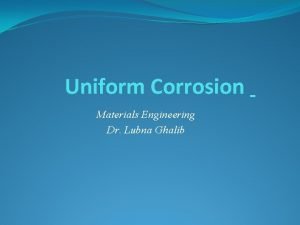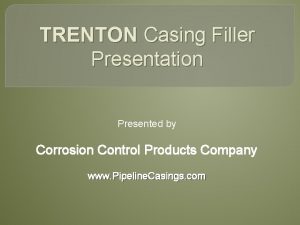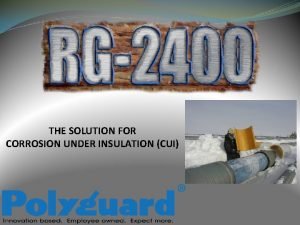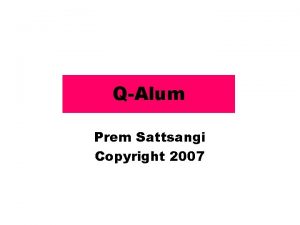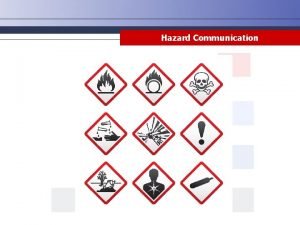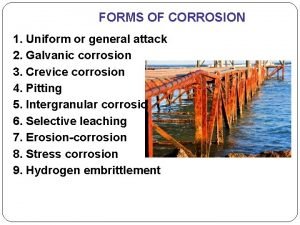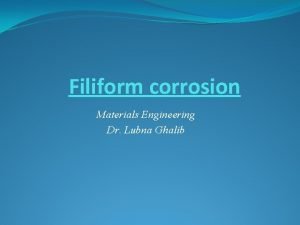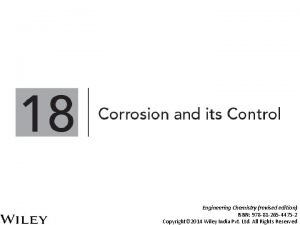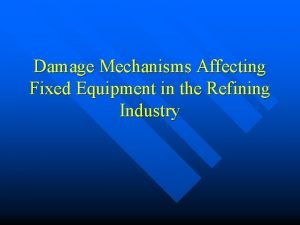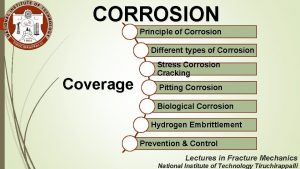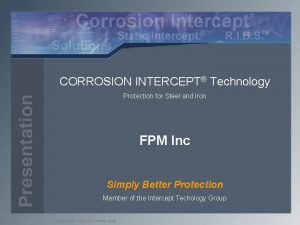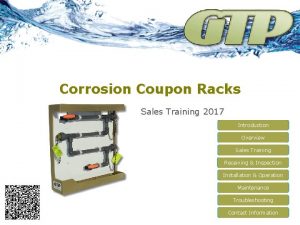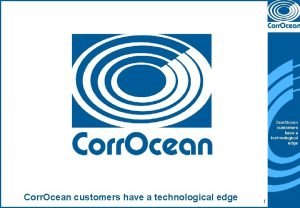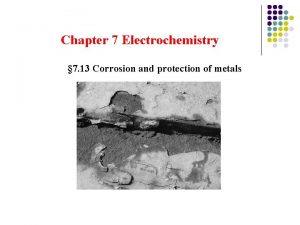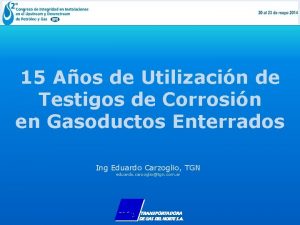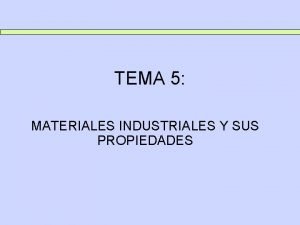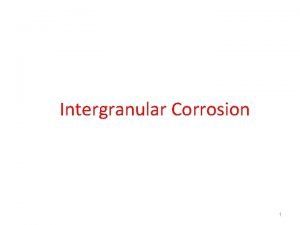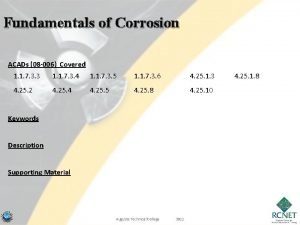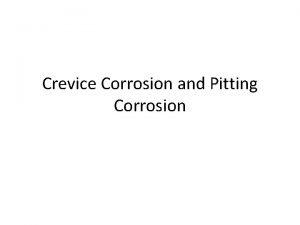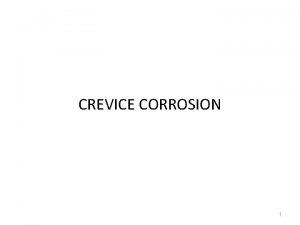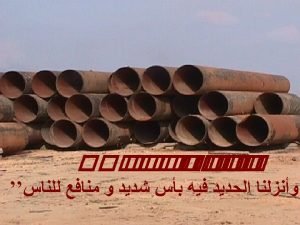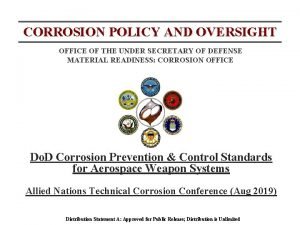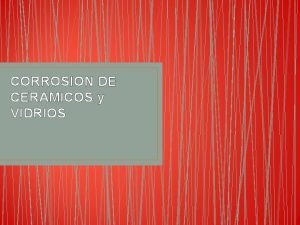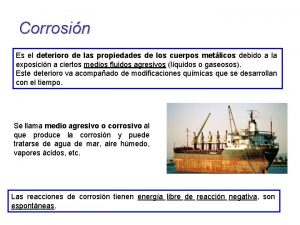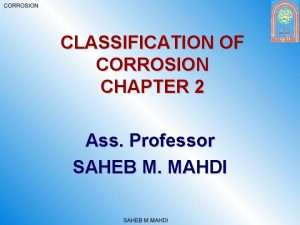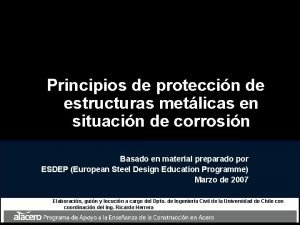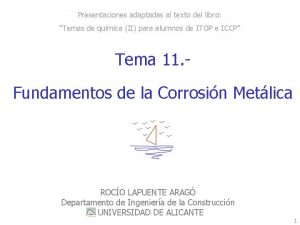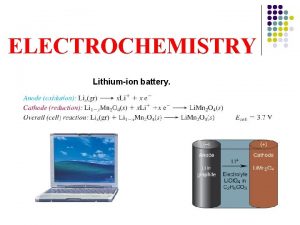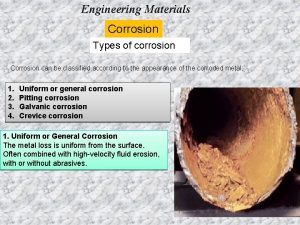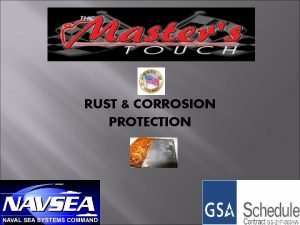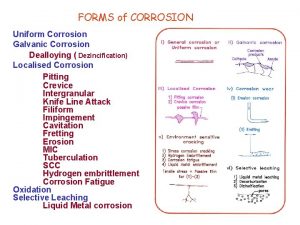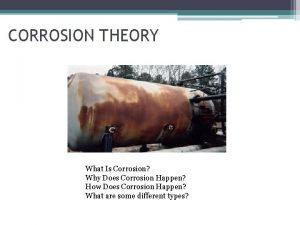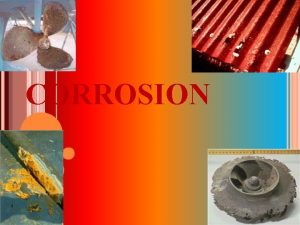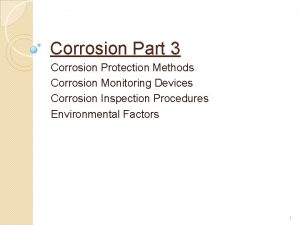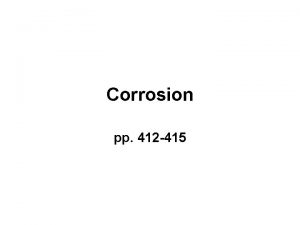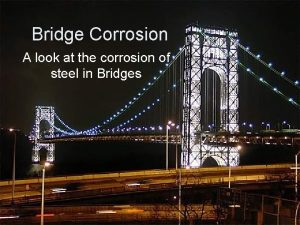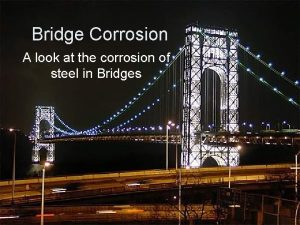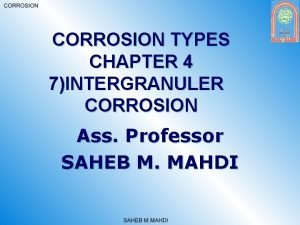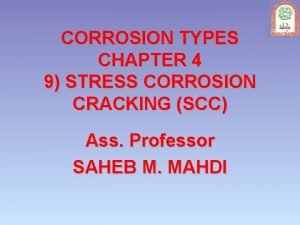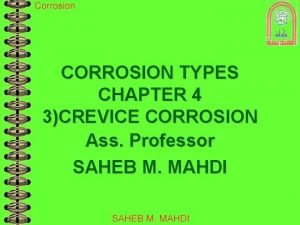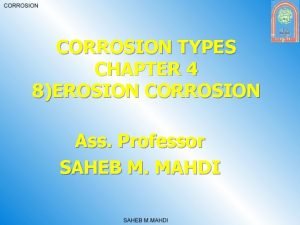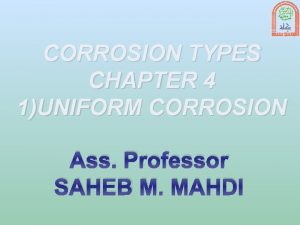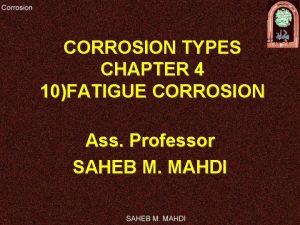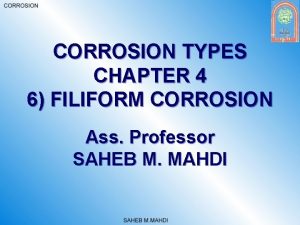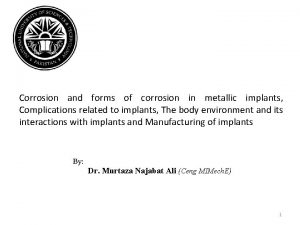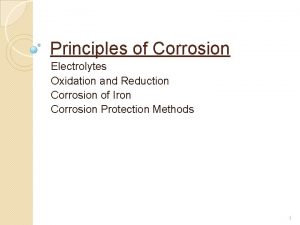A Practical Look at Types of Corrosion and







































- Slides: 39

A Practical Look at Types of Corrosion and What Went Wrong Cliff Cracauer World Sales Meeting 2009

Outline • Types of Corrosion Examined – Atmospheric Makes up majority of claims – Microbiologically Induced Corrosion (MIC) • Causes of Corrosion – Who, What, When, Where & Why • Troubleshooting when a claim occurs • Examples

Atmospheric Corrosion • Necessary Elements – Presence of electrolyte – Humidity • Fe is >60% RH – Others depend on: • Hygroscopic Nature • Atmospheric Pollutants


Troubleshooting Corrosion • Don’t Panic – Everyone WILL eventually have a rust or corrosion issue » Emotional Issue: “The sky is falling” » * Looking for a scapegoat

Troubleshooting Corrosion • Don’t Panic – Everyone WILL eventually have a rust or corrosion issue • Use the Integrated Solutions Approach » » * Identify extent of corrosion * Look for potential causes


The Four Quadrants -Which category did your customer fall within Uses VCI HAS a Rust Issue Uses VCI Does NOT have Problem Does NOT Use VCI HAS a Rust Issue Does NOT Use VCI Does NOT Have Problem

Who is having corrosion?

New Customers • Use “the four quadrants” – Switching from another brand to Cortec? • Pre-existing problem – Was the application correct to begin with? – Was there an existing corrosion problem that was noticed? – The product change CAUSED the problem • Wrong Application • Awareness – Customer not aware of the problem • Sabotage – Allegiance to previous supplier

Established Customers • Long standing customers susceptible: – Change in personnel – Cutting Corners – Product Reduction • Down gauging • Lower Concentration or thickness – Other extenuating circumstances • e. g. Receiving party not taking care upon receipt

What, Where, When & How • What caused the corrosion problem? • Where did the corrosion initiate? • When was the corrosion problem identified? • How to move forward?

Categorize the Application • Identify what is new, or what has changed – New Application – New Customer – New Facility – New Material – New Process – New Raw Material Supplier – Change of Season – New Shipping Route, or company

Troubleshooting Corrosion • Visit the customer – Allows you to identify • Who is responsible • The extent of the problem – Difficult to see from a picture • Emotion & Attitude of the customer • Other factors involved • Coordinate someone to visit the sight of the corrosion problem

Troubleshooting Corrosion • While visiting the customer – Look for the unusual • • Smells Textures Purchasing habits (prior to visiting) Different people using the product • Coordinate someone to visit the sight of the corrosion problem

Process Troubleshooting • Packaging Problem – What does the corrosion look like? – Is it uniform throughout the package? – Is it isolated to one area of the package? • Top of package • Center of package – Is there moisture in the package?

Process Troubleshooting • Chemical Application – What does the corrosion look like? – Is it happening immediately (flash rust)? • Quality Control – Identify how they measure the product • p. H • Refractomer • Temperature – Check the quality log

What We Need • Cortec Product used: – Batch number – Process flow chart • What happens before & after product use – Sample of material from batch, or process – Pictures – Contact Data • Contact Cortec Immediately – Don’t Wait – Make a joint call – Deploy someone to the end customer

Examples of Troubleshooting

Example: Insufficient Protection • Heavy Corrosion • Evidence of Condensation • Multi-metal corrosion • Don’t automatically blame competitor’s product!

Example: Contamination

Example: Contamination • Vp. CI 368 Applied to surfaces – Visually examined – Identified unusual occurrences • 368 not clinging to vertical surfaces • Pooling present • Possible causes: – Contamination – Surface temperature too high

Example: Insufficient Protection

Example: Insufficient Protection • Existing, long standing customer – Vp. CI 322 fogged inside engine compartment • No visual indication of application problem • Reviewed purchase history – Using 1/10 of the appropriate amount – Resulted from personnel changes

Example: Contamination & Physical Damage

Example: Contamination & Physical Damage

Example: Contamination & Physical Damage • Problem: Probes enter tanks and chip away coating • Solution: – Add a finish coat (MCI 2026) that significantly increased impact resistance by 200% – Increase overall coating thickness for additional protection

Contamination • Cleaning Process – Vp. CI 422 – Vp. CI 416 – Vp. CI 377 • Carryover • Decreased p. H in 377

Example: Work In Process Corrosion

Example: In Process Corrosion • Finished Gear (left) • Shipment to Brazil • “Corrosion” upon receipt (right)

Example: In Process Corrosion • Corrosion identified at end customer in Brazil • Considered quality issue at packager • Solution: – Reviewed packaging • No noticeable issues – Looked at parts with corrosion – Viewed earlier process • Likely cause was handling & processing issue • Quality log not properly maintained

Example: Damage in Transit

Example: Damage in Transit

Example: Existing Corrosion • Chiller shipped to India • Bleeding through paint • Audited Entire process

Example: Existing Corrosion • Corrosion ID by customer in India • Previous Process: – – Leak test Wash Paint Pre-treat Paint • Painting over rust • No inhibitor in paint

Example: Existing Corrosion • Added VCI to wash • Used PKG during shipping – Band-aid approach • Working on paint

Troubleshooting Corrosion • Don’t “pass the buck” – Take ownership • Provide a solution • Become the corrosion expert – Benefits: • Secure existing business • Develop new business • Eliminate Competition

Troubleshooting Corrosion • Be Proactive – For existing customers: • Perform regular corrosion audits • Sell Integrated Solution • Don’t assume everything is ok • Seek opportunities • Leverage relationship • Increase SKUs

Conclusions • Corrosion is inevitable – Ever customer will eventually have a problem – How you respond will determine success • Utilize Integrated Solutions approach – Process – People – Product
 Look up to the left
Look up to the left Dry corrosion and wet corrosion
Dry corrosion and wet corrosion Dry corrosion and wet corrosion
Dry corrosion and wet corrosion Types of electrochemical corrosion
Types of electrochemical corrosion Activity 3.picture analysis
Activity 3.picture analysis Activity 1 look at the picture
Activity 1 look at the picture Look at the picture in activity 3
Look at the picture in activity 3 Stress corrosion
Stress corrosion Uniform corrosion
Uniform corrosion Corrosion prevention casing filler
Corrosion prevention casing filler Corrosion under insulation primer
Corrosion under insulation primer Aluminium corrosion equation
Aluminium corrosion equation Skin corrosion symbol
Skin corrosion symbol Uniform attack corrosion
Uniform attack corrosion Filiform corrosion definition
Filiform corrosion definition Waterline corrosion
Waterline corrosion Galvanic corrosion
Galvanic corrosion Sulfidation corrosion
Sulfidation corrosion Oxidation
Oxidation Lemförder corrosion protection
Lemförder corrosion protection Corrosion coupon rack installation
Corrosion coupon rack installation Corrocean corrosion monitoring
Corrocean corrosion monitoring Waterline corrosion
Waterline corrosion Testigos de corrosión
Testigos de corrosión Grupos de materiales
Grupos de materiales Intergranular corrosion prevention
Intergranular corrosion prevention What factors affect the rate of corrosion
What factors affect the rate of corrosion Pitting corrosion
Pitting corrosion Corrosion type
Corrosion type 2019 dod allied nations technical corrosion conference
2019 dod allied nations technical corrosion conference Corrosion galvanique
Corrosion galvanique Corrosion control solutions
Corrosion control solutions Mil-std-1587
Mil-std-1587 Corrosion del vidrio
Corrosion del vidrio Corriente de corrosion
Corriente de corrosion Classification of corrosion
Classification of corrosion Tipos de corrosion
Tipos de corrosion Nerst
Nerst Ki electrolysis
Ki electrolysis Celda de aireación diferencial
Celda de aireación diferencial

